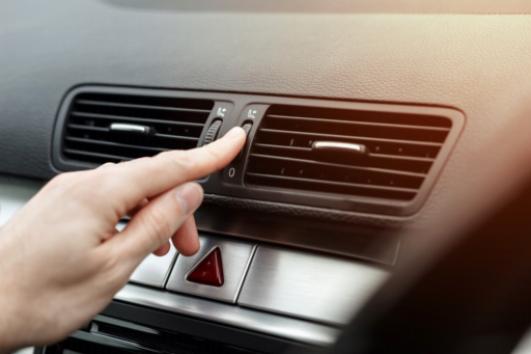The Importance of a Functional Windscreen Defroster in Your Vehicle
22 November 2025 by Edward W.When it comes to driving in cold weather, a functional windscreen defroster is crucial for maintaining clear visibility and ensuring safe travels. In this article, we will delve into the importance of a properly operating windscreen defroster, the factors contributing to windscreen frost and its impacts, the design and operation of vehicle defrosters, maintenance tips for optimal performance, technological advancements in defrosting systems, as well as legal and safety considerations for clear windscreens. Understanding these aspects will help drivers better appreciate the significance of a functional windscreen defroster in their vehicles.

Understanding the Role of a Windscreen Defroster
A windscreen defroster is an essential component of a vehicle's heating and cooling system. Its primary function is to remove frost, ice, and condensation from the interior surface of the windscreen, ensuring optimal visibility for the driver. In cold weather conditions, a functional defroster is crucial for safe driving, as it prevents obstructed vision and potential accidents. Understanding the role of a windscreen defroster is key to recognizing its importance in maintaining a clear and safe driving environment.Factors Contributing to Windscreen Frost and Its Impacts
Windscreen frost occurs when the temperature drops below freezing, causing moisture in the air to condense and freeze on the glass surface. This can be caused by various factors such as cold weather, high humidity, and precipitation. When a vehicle is left outdoors in these conditions, the windscreen is susceptible to frost formation. The impacts of windscreen frost can be significant, as it impedes visibility for the driver, leading to unsafe driving conditions. This can increase the risk of accidents and collisions, especially during the early morning hours when frost is most likely to occur. Additionally, attempting to drive with a frosted windscreen can result in fines and penalties from law enforcement. It is important for drivers to understand the factors contributing to windscreen frost in order to take necessary precautions and ensure the safety of themselves and others on the road.Design and Operation of Vehicle Windscreen Defrosters
The design and operation of vehicle windscreen defrosters are crucial for ensuring optimal visibility and safety while driving in cold weather conditions. Most modern vehicles are equipped with a windscreen defroster system that uses a combination of air circulation, heat, and sometimes even electrical elements to remove frost and ice buildup from the interior surface of the windscreen. The defroster system typically works in conjunction with the vehicle's heating and ventilation system to ensure that the windscreen is clear and free from obstruction. The design of the windscreen defroster system varies depending on the make and model of the vehicle, but its basic operation remains the same. When the defroster is activated, warm air is directed toward the windscreen, which helps to melt and evaporate any frost or ice that has accumulated on the surface. In some cases, the defroster system may also utilize electrical elements embedded in the windscreen to quickly and effectively melt any ice or frost buildup. It's worth noting that the design and operation of the windscreen defroster system are closely linked to the overall effectiveness of the vehicle's heating and ventilation system. Proper airflow and temperature control are essential for ensuring that the defroster can effectively remove frost and ice from the windscreen. Additionally, regular maintenance of the heating and ventilation system, including the defroster components, is necessary to ensure optimal performance. In conclusion, the design and operation of the vehicle windscreen defroster are fundamental to maintaining clear visibility and ensuring safe driving in cold weather conditions. Understanding how the defroster system works and how it integrates with the vehicle's heating and ventilation system is essential for ensuring optimal performance and safety on the road.Maintenance Tips for Optimal Defroster Performance
To ensure optimal defroster performance, regular maintenance is crucial. Here are some maintenance tips to keep your windscreen defroster in top condition:1. Check and replace worn-out or damaged defroster components, such as the defroster grid or electrical connectors.
2. Clean the windscreen and defroster vents regularly to remove any dirt, dust, or debris that could obstruct the airflow.
3. Test the defroster system periodically to make sure it is functioning properly.
4. Keep the vehicle's coolant system in good condition to ensure that the heater and defroster systems work effectively.
5. Inspect and replace the vehicle's cabin air filter as recommended by the manufacturer to maintain good airflow through the defroster vents.
6. Avoid using abrasive cleaners or tools on the windscreen to prevent damage to the defroster grid.
7. Address any electrical issues immediately to prevent potential malfunctions in the defroster system. By following these maintenance tips, you can ensure that your windscreen defroster performs optimally, keeping your visibility clear and ensuring safe driving in cold and frosty conditions.